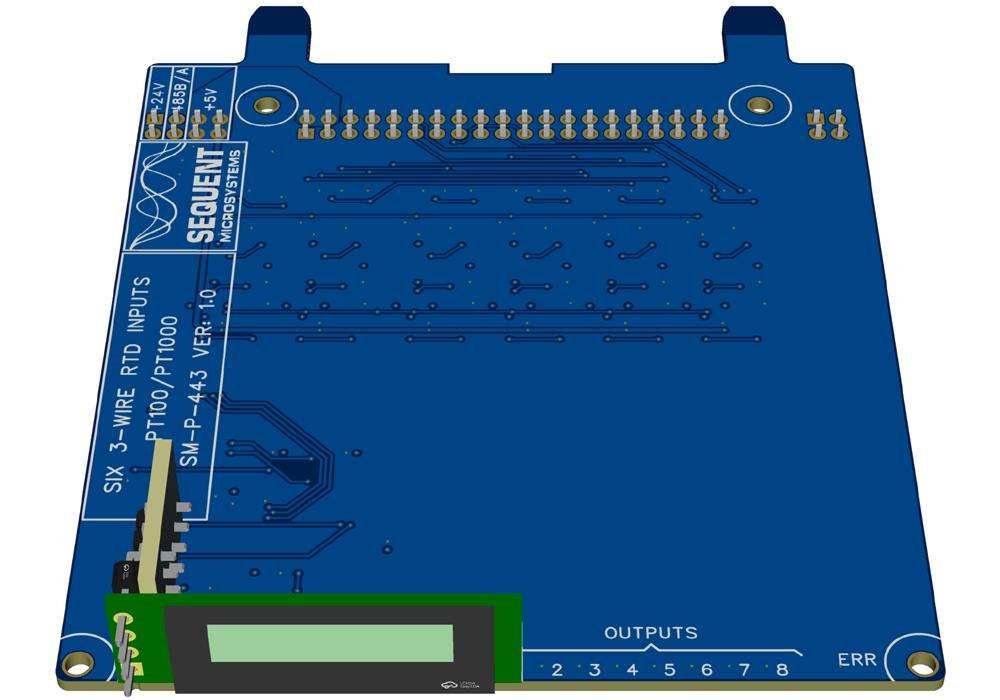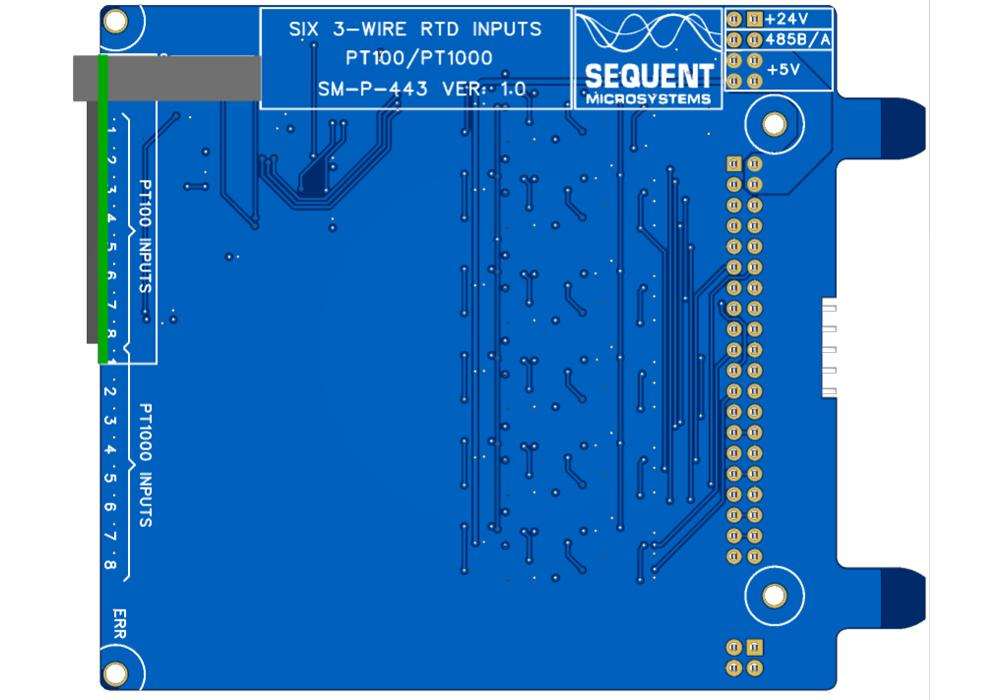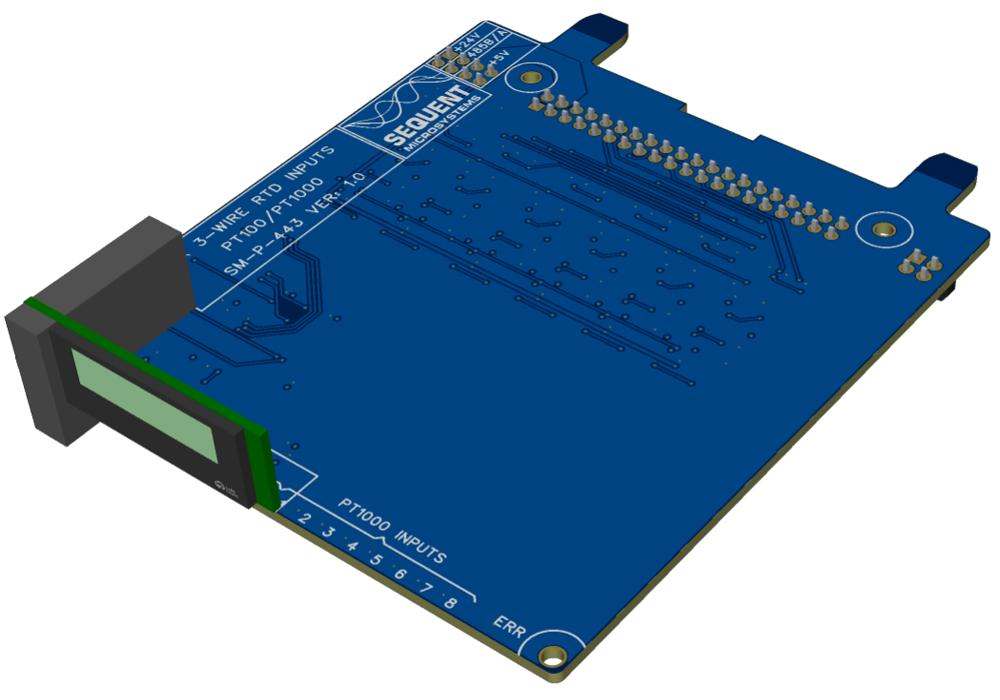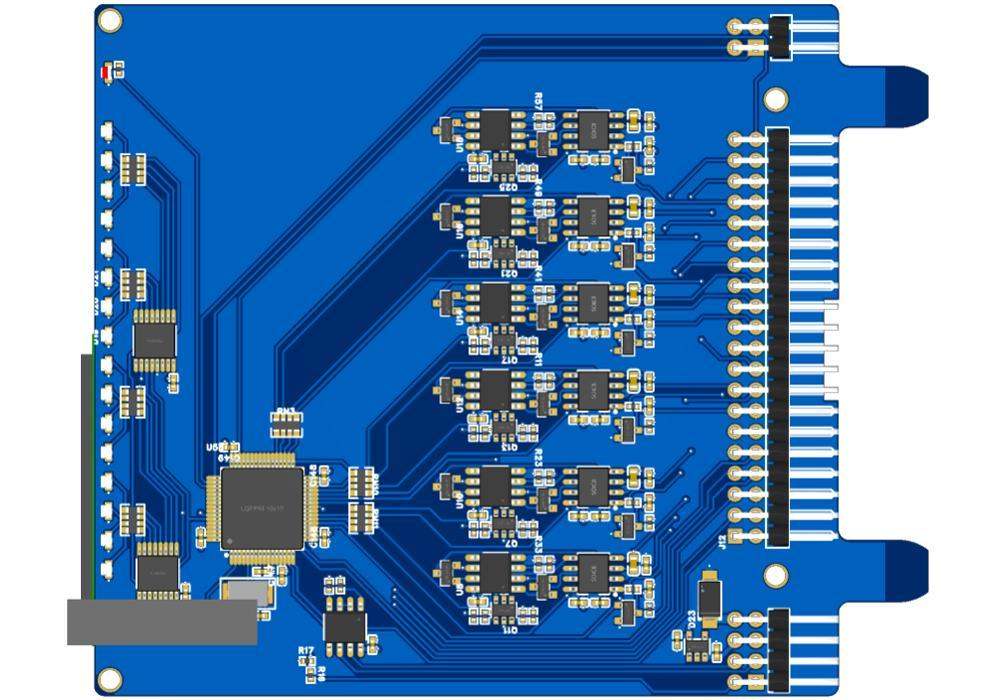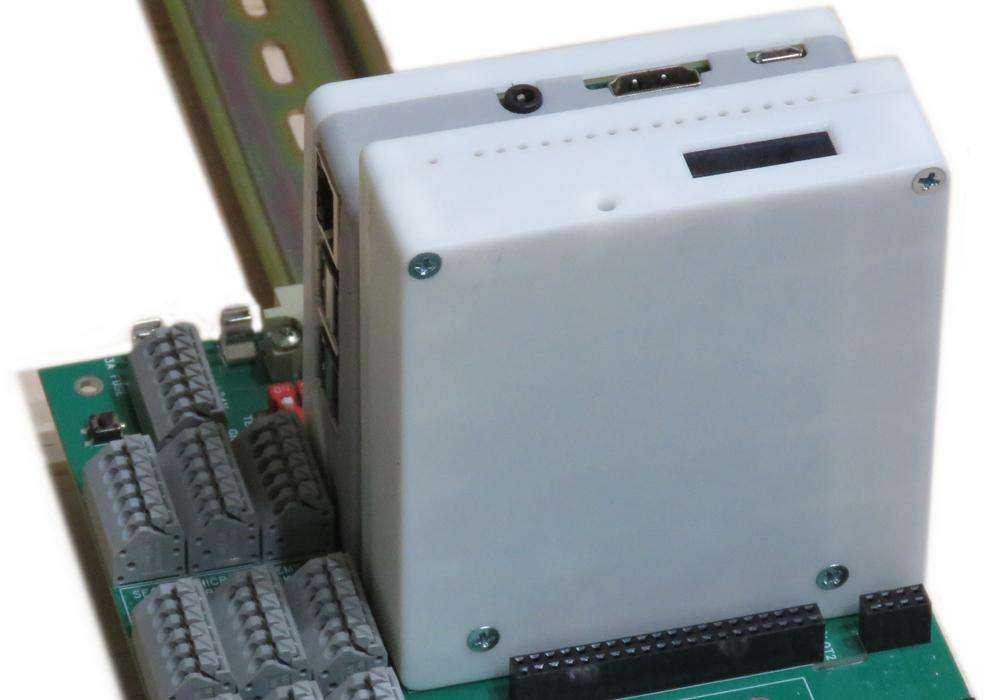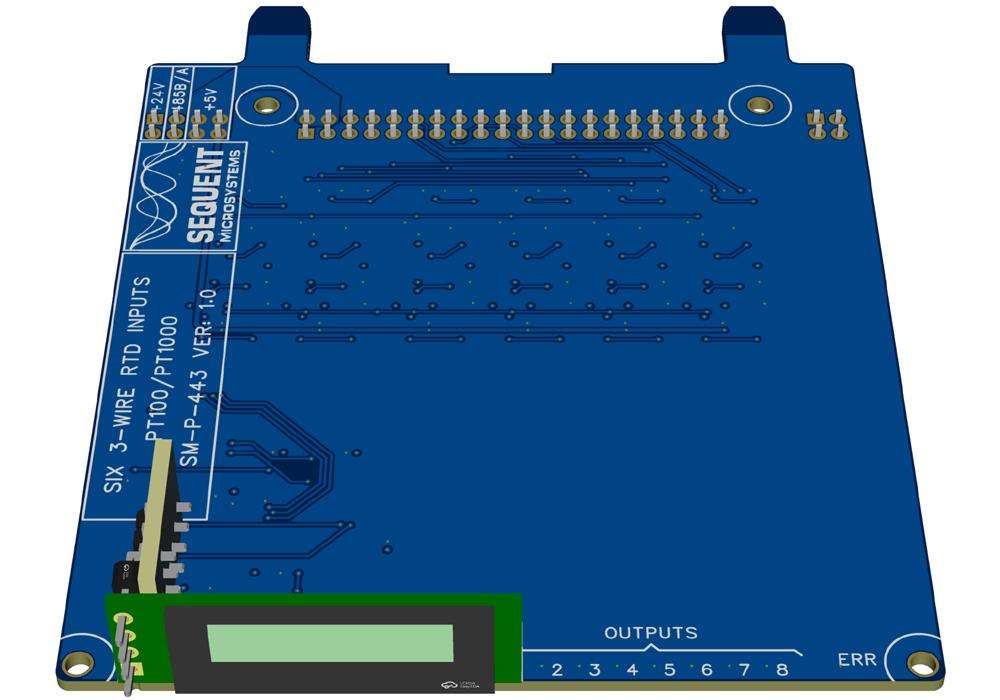
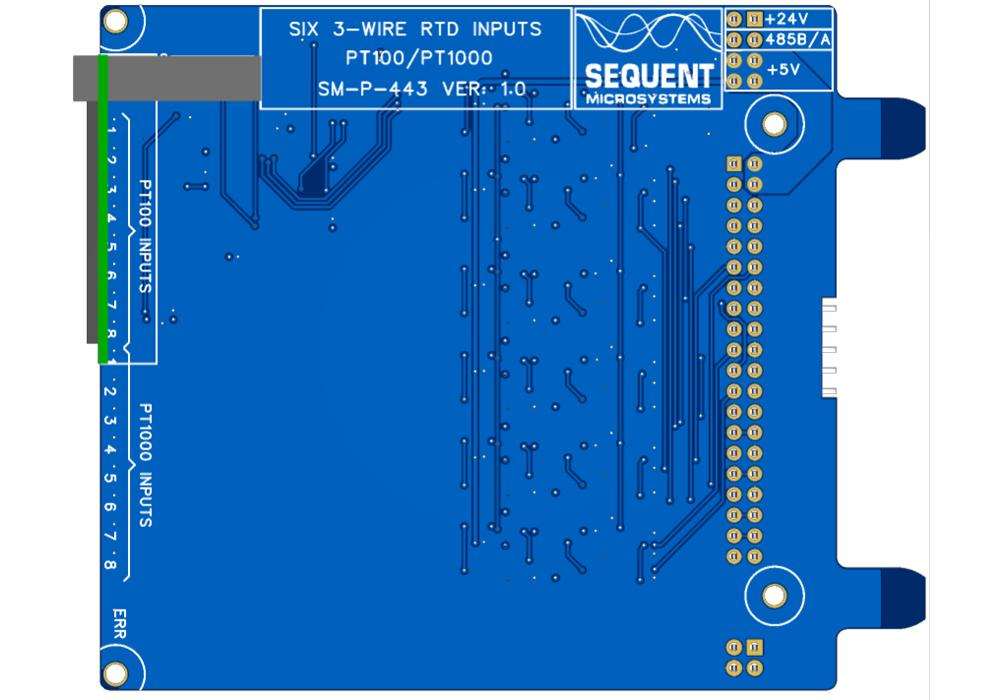
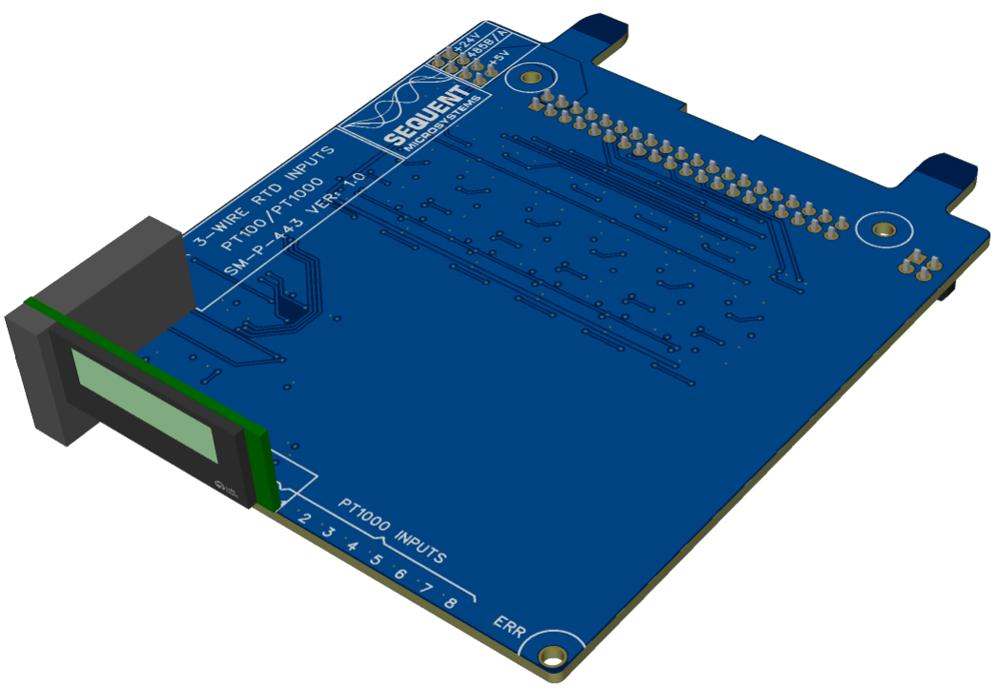
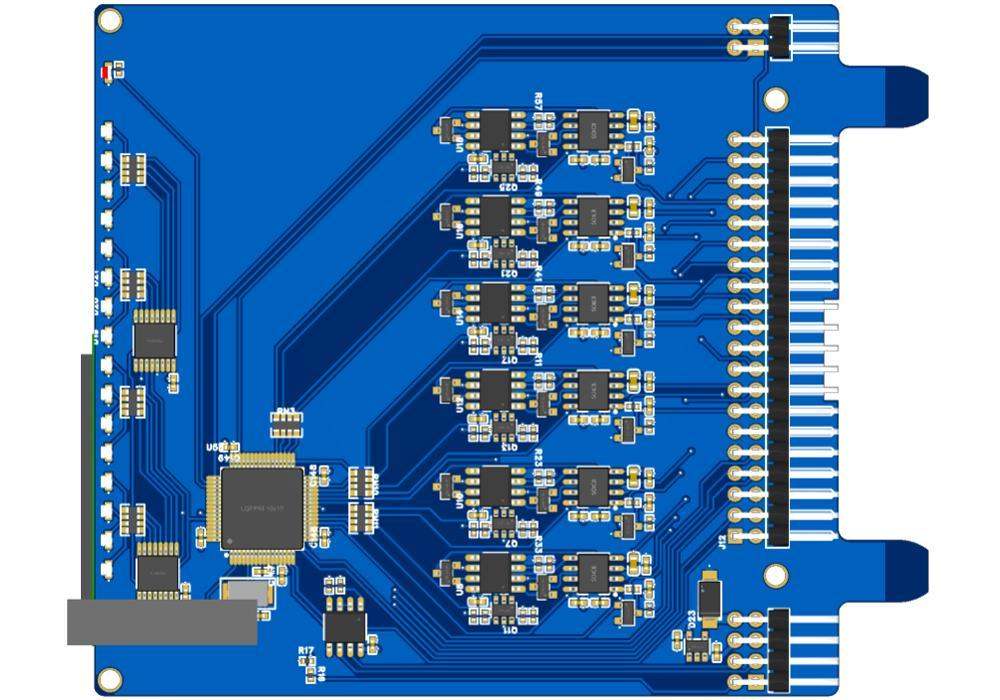
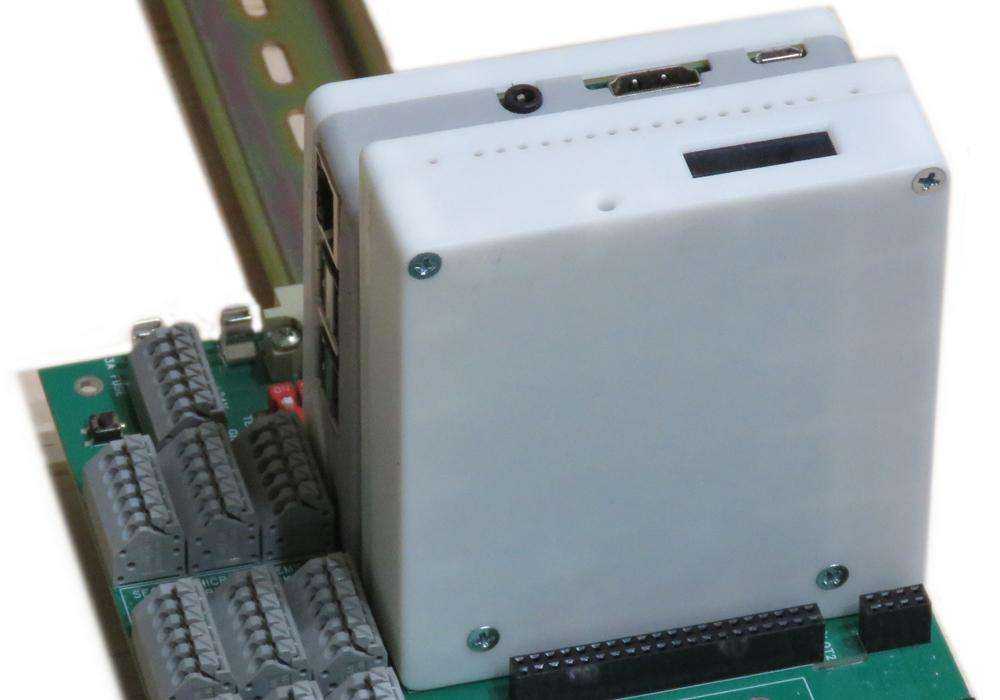

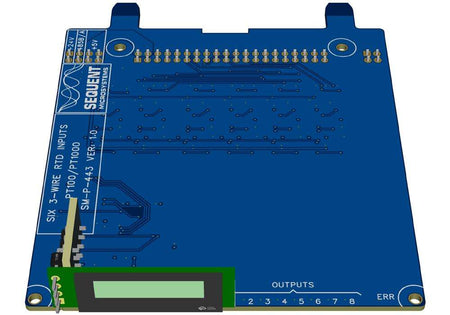
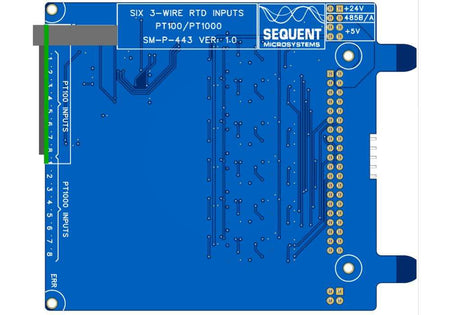
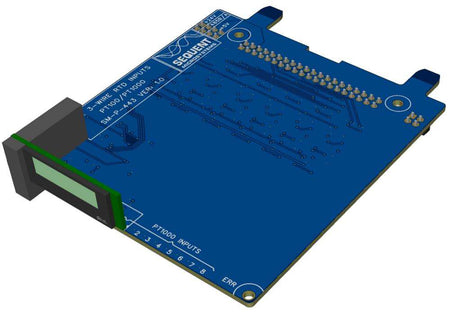
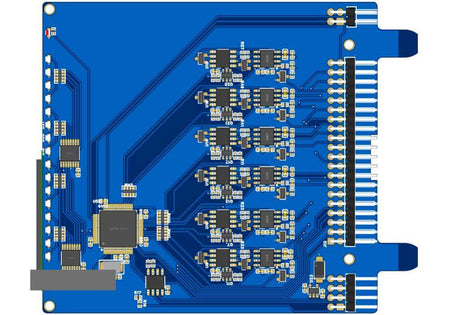
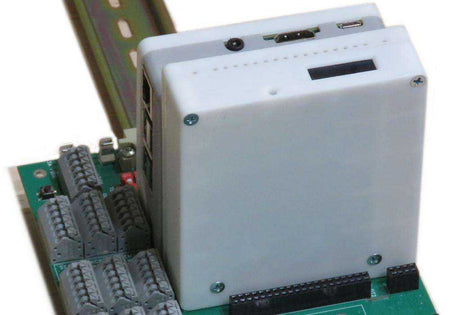

6-Channel 3-wire RTD Card PT100 and PT1000 for Raspberry Pi Back Panel
Six channel RTD Card with Software Selectable PT100 or PT1000 probes
Add six 3-wire RTD channels (PT100/PT1000) to your Raspberry Pi Back Panel system for precise, reliable temperature monitoring. The card features true 3-wire compensation, stable excitation, and noise-filtered measurements, with all connections routed cleanly through the Back Panel. Control it via CLI/Python or RS485/MODBUS, and scale by stacking alongside other HOP modules.
FEATURES
- 6 RTD inputs, 3-wire compensation - supports PT100 and PT1000 probes
- True 3-wire lead compensation per channel to minimize cable resistance error
- Precision excitation and low-noise front end for stable, repeatable readings
- Mains-hum rejection (50/60 Hz) and input filtering for noisy environments
- Back Panel integration - clean wiring via Back Panel terminals; auto slot addressing
- RS485 / MODBUS RTU support for use with external PLCs (no Pi required)
- I²C control from Raspberry Pi with command-line tools and Python/C libraries
- OpenPLC and CODESYS integration options for industrial workflows
- LED status per channel and system indicators for quick diagnostics
- Stacks with other HOP cards - mix up to 8 cards per Back Panel; chain panels for larger systems
- Powered via Back Panel; no extra supply or cabling required for the card itself
-
Built-in OLED Display:128×32 dot matrix screen for displaying system status, messages, or sensor values.
DESCRIPTION
Part of the HOP (Hardware On Panel) family developed by Sequent Microsystems, the 6-Channel 3-wire RTD Card is designed to integrate seamlessly with the Raspberry Pi Back Panel. Up to eight HOP cards—of any type—can be installed on a single Back Panel, offering maximum flexibility for industrial automation applications. Multiple Back Panels can be connected horizontally to support larger projects.
Each input can be configured in software to read either PT100 or PT1000 probes - no jumpers or DIP switches required.
Like all HOP cards, the 6-Channel 3-wire RTD Card features 18 LED indicators. The power LED blinks when power is applied and the local processor is operational. An error LED illuminates when an input is outside a predefined condition. Sixteen additional LEDs display the real-time status of each input, also indicating whether the input is in PT100 or PT1000 mode.
An RS485 port enables communication with external PLCs or industrial controllers using the industry-standard MODBUS RTU protocol.
Power Requirements
The 6-Channel 3-wire RTD Card is powered via the Back Panel power connector. The local processor is powered from the 5V rail through a 3.3V LDO regulator and consumes 10 mA.


-
Power Supply: 5V 10mA Back Panel provided

DOWNLOADS
Hardware Schematic V1.0
3D STEP Model
3D Printable Enclosure
SOFTWARE
Command Line Drivers
Python Libraries
CODESYS Driver
OpenPLC Module
QUICK START
- Plug the 6-Channel 3-wire RTD Card on the Back Panel for Raspberry Pi and power up the system.
- Enable I2C communication on Raspberry Pi using raspi-config.
- Install the software from github.com:
- git clone https://github.com/SequentMicrosystems/sequent-cli.git
- cd /home/pi/sequent-cli
- sudo make install
- sequent-cli 6rtd -h
FAQ
Q: What is the function of this card?
A: It provides six programmable RTD Inputs, each configurable to read PT100 or PT1000 probes, for industrial control applications.
Q: Can I mix this card with other HOP cards on the same Back Panel?
A: Yes, up to eight HOP cards of any type can be installed on a single Back Panel, allowing flexible I/O combinations.
Q: How do I configure PT100 or PT1000 probes?
A: Output mode is configured in software—no need for jumpers or DIP switches.
Q: What software platforms are supported?
A: The Card supports MODBUS RTU over RS485, and is compatible with OpenPLC, CODESYS, and Sequent’s command-line utilities.
Q: What do the LEDs indicate?
A: One LED indicates power and processor health, one signals an error condition, and 12 LEDs display real-time input activity and mode.
Q: How is the card powered?
A: Power is supplied through the 5V rail of the Raspberry Pi Back Panel.
Q: Is this card stackable?
A: Yes. It can be stacked with up to seven other HOP cards per Back Panel. Additional Back Panels can be chained for larger systems.
Q: Can I use this card without a Raspberry Pi?
A: Yes, via RS485 and MODBUS RTU, the card can be controlled by an external PLC or industrial controller without a Raspberry Pi.
Q: What types of loads can the outputs drive?
A: The card is designed to drive standard industrial 4–20mA current loops in both sourcing and sinking configurations. Refer to the datasheet for load specifications.
Related products
-
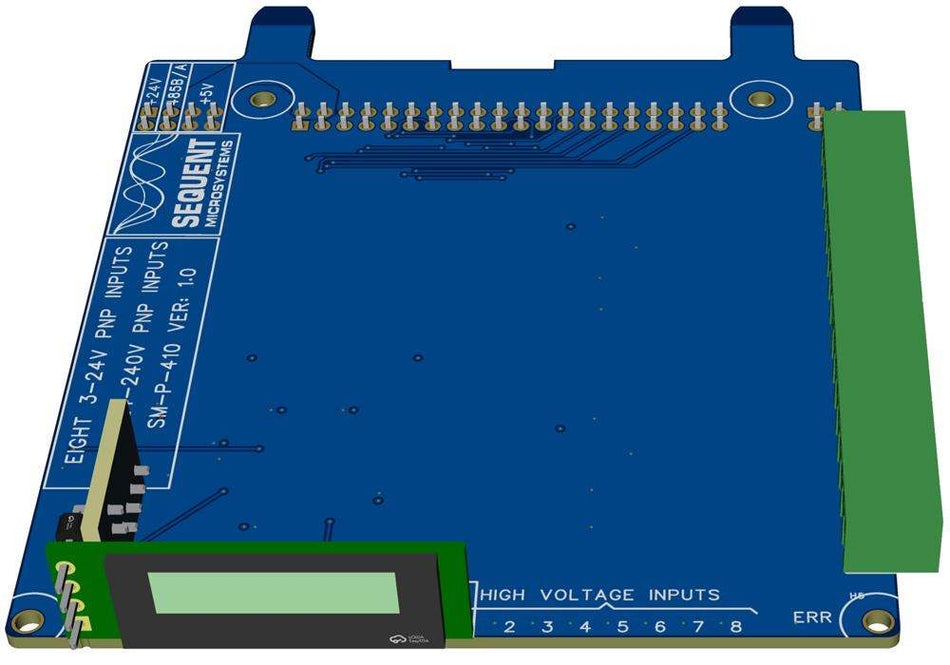 Coming soon
Coming soon16-Channel Digital Inputs HV/LV for Raspberry Pi Back Panel
8 High Voltage and 8 Low Voltage optoisolated PNP inputs for Sequent Microsystems Back Panel -
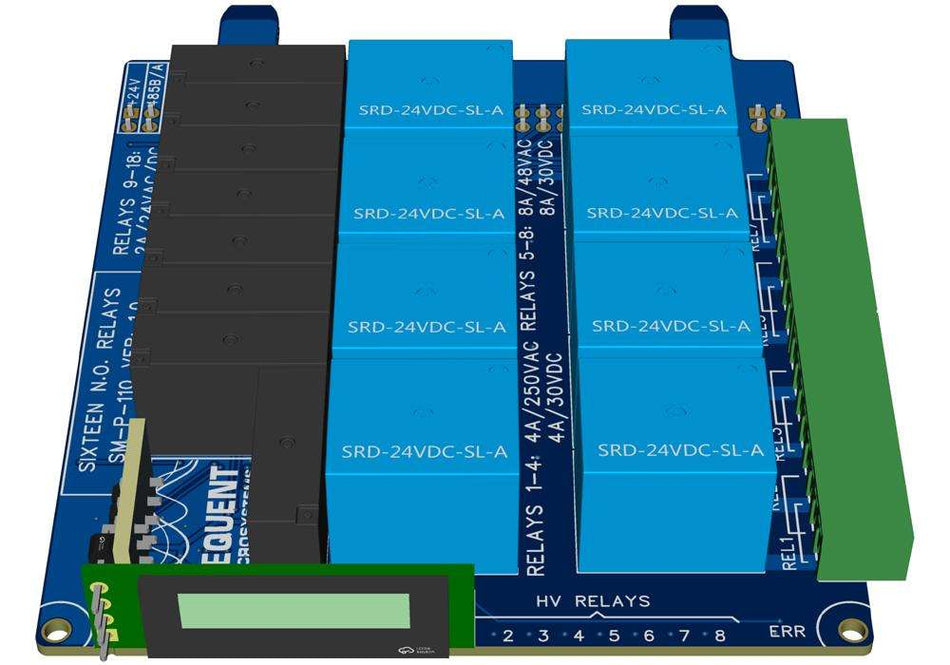 Coming soon
Coming soon16-Channel HV-LV Relay Card for Raspberry Pi Back Panel
16-channel relay card for Raspberry Pi Back Panel: 8 low power and 8 high power relays -
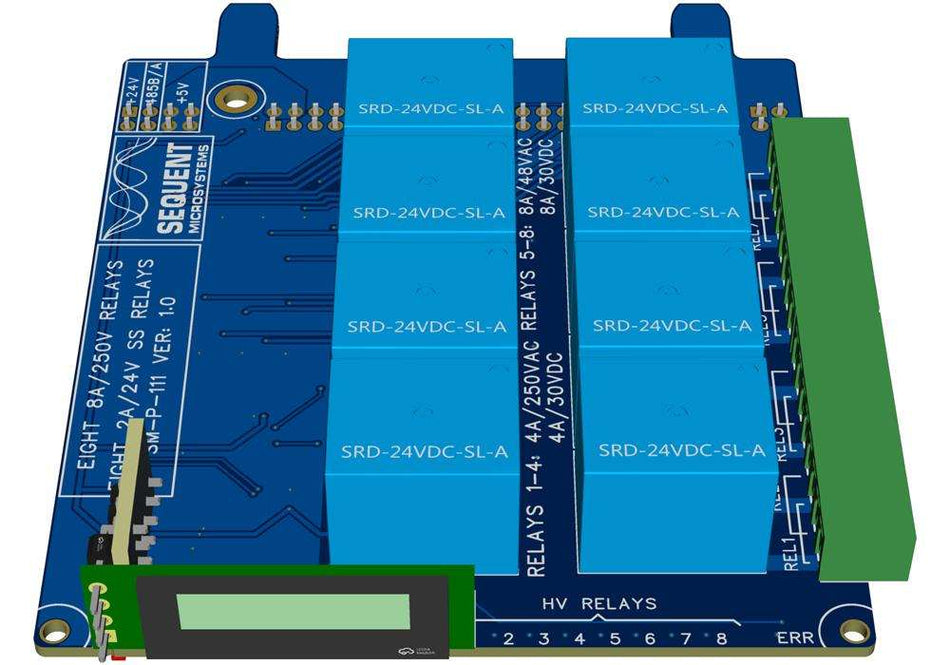 Coming soon
Coming soon16-Channel HV-SS Relay Card for Raspberry Pi Back Panel
16-channel relay card for Raspberry Pi Back Panel: 8 low power and 8 solid state relays -
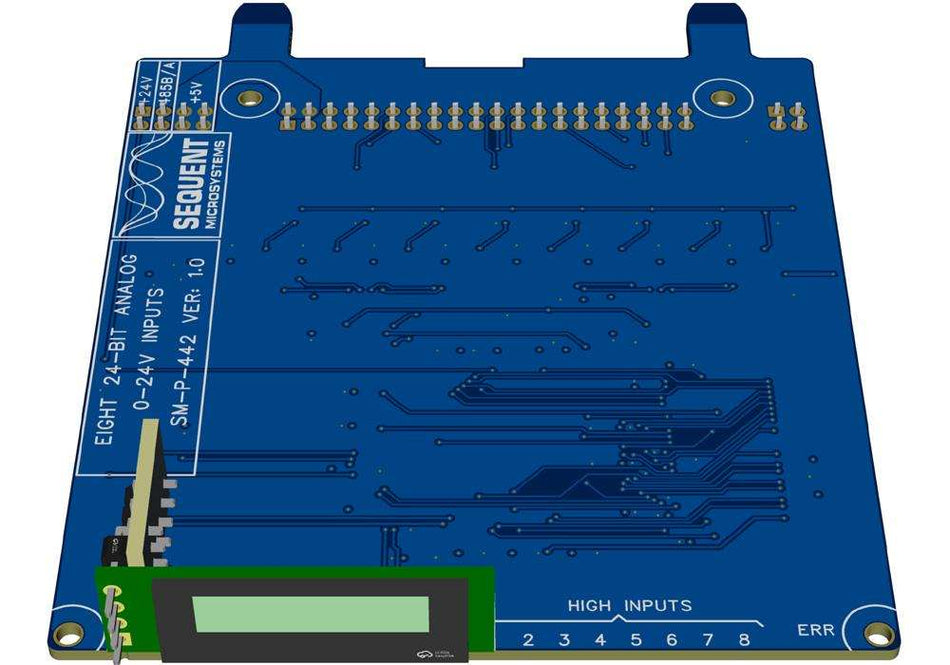 Coming soon
Coming soon8-Channel 24bit Analog Input Card for Raspberry Pi Back Panel
8-Channel 24bit Analog Input Card with Software selectable inputs: ±0.18V, ±0.37V, ±0.75V, ±1.5V, ±3V, ±6V, ±12V, ±24V

